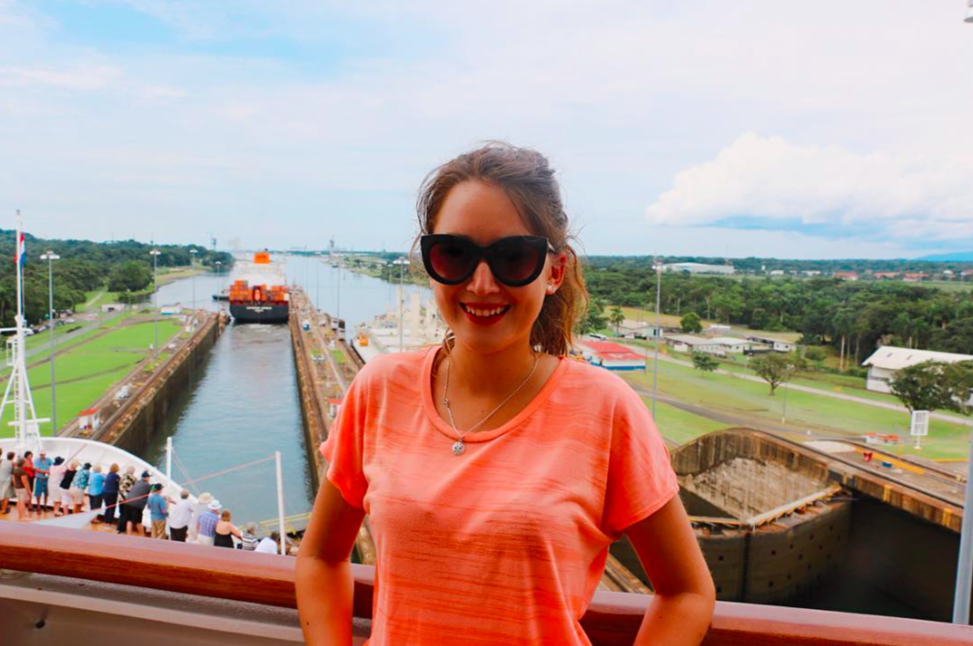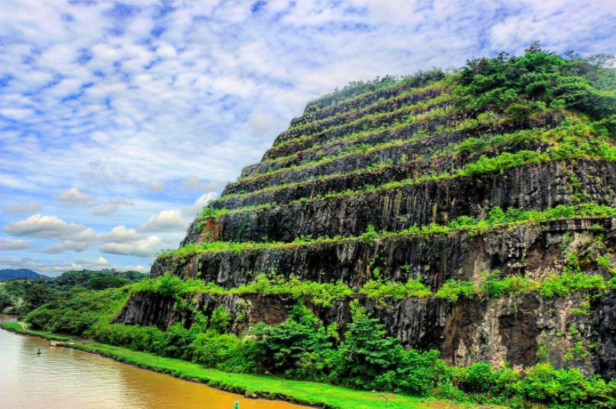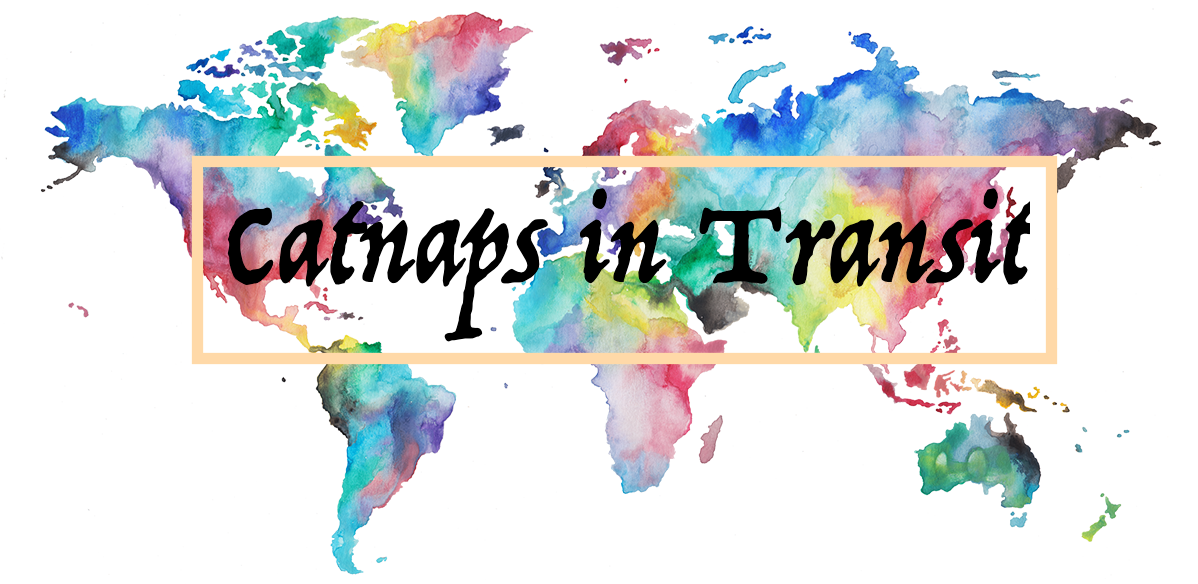Panama
Cruising through the Panama Canal
The Panama Canal recently celebrated it’s 100th birthday and it’s doing very well for its age.
The amazing canal is still stands out as one of the true engineering marvels of the world and plays a hugely important role in Panama’s history and the lives of Panamanians.
 The Panama Canal is dubbed “one of the seven wonders of the modern world” by the American Society of Civil Engineers, and the 48-mile waterway divides two continents and connects two mighty oceans.
The Panama Canal is dubbed “one of the seven wonders of the modern world” by the American Society of Civil Engineers, and the 48-mile waterway divides two continents and connects two mighty oceans.
I didn’t expect to have the opportunity to cross through the canal but as I have a very nice friend working on a very nice cruise ship I had the chance to do the entire crossing of one of man’s most amazing modern constructions and learn about the creation of the incredible Panama Canal.
The idea of a canal linking the Atlantic and Pacific Oceans dates back to the 1500s when King Charles I of Spain tapped his regional governor to survey a route along the Chagres River. It was quickly decided that the mountainous, jungle terrain would make the construction impossible. It wasn’t until France returned in 1880 to attempt the task. The construction was led by Count Ferdinand de Lesseps, the builder of the Suez Canal in Egypt. The French soon discovered the monumental challenge of the construction ahead: Along with the incessant rains that caused heavy landslides, there was no effective means for combating the spread of yellow fever and malaria. De Lesseps belatedly realized that a sea-level canal was too difficult and reorganized efforts toward a lock canal, but funding was pulled from the project in 1888.
 In 19o2 the U.S. purchased the French assets in the canal zone for $40 million following a push from President Theodore Roosevelt. The territory was originally considered Colombia, so the U.S. threw its military weight behind a Panamanian independence movement which resulted in a 1903 deal that gave them rights in perpetuity to the canal zone.
In 19o2 the U.S. purchased the French assets in the canal zone for $40 million following a push from President Theodore Roosevelt. The territory was originally considered Colombia, so the U.S. threw its military weight behind a Panamanian independence movement which resulted in a 1903 deal that gave them rights in perpetuity to the canal zone.
The Americans copied the French and began to plan a sea-level canal, officially commencing the project on May 4th, 1904. But problems immediately appeared. The French equipment was in desperate need of repair and malaria struck to workforce. The Chief engineer at the time, John Wallace, resigned after the first year.
The next chief engineer was the railroad specialist John Stevens who recruited West Indian labourers. New equipment and tactics were devised and realising the constant problem of landslides he decided to create a lock canal. Meanwhile, mosquitos were discovered to be the carriers of the deadly diseases effecting the workers and large mosquito-murdering missions began to fumigate homes and cleanse water sources. Malaria levels soon dropped precipitously.
 The next challenge was the Culebra Cut, the clearing of the mountain range between Gamboa and Pedro Miguel. The excavation of the nearly 9-mile stretch became a 24/7 operation, with up to 6,000 men contributing at every hour of the day. Although there was a lot of attention on the Culebra Cut, it was a notorious danger zone, as unpredictable landslides and dynamite explosions took casualties.
The next challenge was the Culebra Cut, the clearing of the mountain range between Gamboa and Pedro Miguel. The excavation of the nearly 9-mile stretch became a 24/7 operation, with up to 6,000 men contributing at every hour of the day. Although there was a lot of attention on the Culebra Cut, it was a notorious danger zone, as unpredictable landslides and dynamite explosions took casualties.
In August 1909 the lock construction began with the concrete pouring at Gatún. The locks were built in pairs with each chamber measuring 110 feet wide by 1,000 feet long, the locks were embedded with culverts that leveraged gravity to raise and lower water levels. Ultimately, the three locks along the canal route lifted ships 85 feet above sea level, to man-made Gatún Lake in the middle. Hollow, buoyant lock gates were also built, varying in height from 47 to 82 feet. The entire enterprise was powered by electricity and run through a control board.
By 1913 the project was coming to its finale as two steam shovels progressed from opposide directions of the Calibre Cut, where they met in May. A few weeks later, the last spillway at Gatún Dam was closed to allow the lake to swell to its full height. That October, President Woodrow Wilson operated a telegraph at the White House that triggered the explosion of Gamboa dike, flooding the final stretch of dry passageway at Culebra Cut.
 The Panama Canal officially opened on August 15, 1914, although the planned grand ceremony was downgraded due to the outbreak of WWI. Completed at a cost of more than $350 million, it was the most expensive construction project in U.S. history to that point. Altogether, some 3.4 million cubic meters of concrete went into building the locks, and nearly 240 million cubic yards of rock and dirt were excavated during the American construction phase. Of the 56,000 workers employed between 1904 and 1913, roughly 5,600 were reported killed.
The Panama Canal officially opened on August 15, 1914, although the planned grand ceremony was downgraded due to the outbreak of WWI. Completed at a cost of more than $350 million, it was the most expensive construction project in U.S. history to that point. Altogether, some 3.4 million cubic meters of concrete went into building the locks, and nearly 240 million cubic yards of rock and dirt were excavated during the American construction phase. Of the 56,000 workers employed between 1904 and 1913, roughly 5,600 were reported killed.
Bolstered by the addition of Madden Dam in 1935, the Panama Canal proved a vital component to expanding global trade routes in the 20th century. The transition to local oversight began with a 1977 treaty signed by U.S. President Jimmy Carter and Panama leader Omar Torrijos, with the Panama Canal Authority assuming full control on December 31, 1999. Recognized by the American Society of Civil Engineers as one of the seven wonders of the modern world in 1994, the canal hosted its 1 millionth passing ship in September 2010
I didn’t expect to be so impressed by the Panama Canal, but crossing from the Pacific Ocean to the Atlantic Ocean in one day was amazing – and admiring the mighty locks aid our huge ship through the canal was great entertainment.
(Information from History.com)



